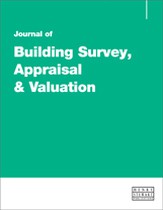Lime thermal plasters and energy efficiency in traditional buildings : Ancient materials combined to optimise building performance
Abstract
Traditional buildings have a central role to play in Europe’s plans to be the first climate-neutral continent by 2050, with the building sector being the single largest energy consumer in the EU with 40 per cent of total energy use. Seventy-five per cent of the existing housing stock is energy inefficient with minute numbers renovated each year. Existing buildings offer huge potential for energy use reduction. Research has shown that a historic retrofit can emit less carbon compared to demolishment and rebuilding. Reductions in carbon emissions of up to 62 per cent were observed across a body of case studies by Historic England, including a 95 per cent reduction in the mews case study described in this paper. Moreover, carefully managed thermal retrofits, taking a ‘whole house approach’, have many benefits, including improved indoor comfort and air quality as well as reduced operational costs. These are factors which are fundamental in ensuring the continued use of historic constructions while improving their standards of preservation and durability. Thermally upgrading traditional building is still a much-debated topic. Inappropriate thermal interventions with unsuitable materials and finishes can have unforeseen consequences, resulting in building damage and a reduction in internal comfort, health and well-being. This paper aims to contribute to this discussion by providing an overview of key considerations when thermally upgrading the walls of traditional buildings while preserving unique characteristics and functionality. Advantages of adopting thermal mortars such as cork lime are put forward, and their potential efficacy is discussed, concluding with a case study focusing on the deep retrofit of a London mews within a conservation area.
The full article is available to subscribers to the journal.
Author's Biography
Niall Crosson is Group Technical Director with Ecological Building Systems. He holds a degree as a Bachelor of Technology (1st class honours) and a Masters Eng. Sc. He is also a Certified European Passivhaus Consultant and founding board member of Irish Green Building Council. Niall has provided technical guidance on several national standard committees and provides expert input to several working groups with the UK Centre for Moisture in Buildings, UK Passivhaus Trust, The Irish Green Building Council and the National Standards Authority of Ireland. His specialist areas of expertise include building physics, energy conservation, hygrothermal analysis, airtightness, natural insulation materials and vapour diffusion open constructions. Over 21 years Niall has received advanced training from airtightness specialists pro clima (www.proclima.com) and natural insulation manufacturers such as DIASEN (www.diasen.com) cork lime thermal plasters, GUTEX the manufacturers of woodfibre insulation (www.GUTEX.de), AURO natural paints and several other companies. Niall has provided guidance to many award-winning new build and retrofit projects in Ireland and the UK. He has also co-authored and authored chapters for a number of low energy building publications including The Passivhaus Handbook and The Passivhaus Designers Manual. His own Passivhaus features in the latest issue of Understanding Passivhaus by Emma Walshaw. He regularly provides technical contributions to numerous professional bodies including the Royal Institute of Architects of Ireland Journal.
Citation
Crosson, Niall (2024, March 1). Lime thermal plasters and energy efficiency in traditional buildings : Ancient materials combined to optimise building performance. In the Journal of Building Survey, Appraisal & Valuation, Volume 12, Issue 4. https://doi.org/10.69554/FWMC8563.Publications LLP
